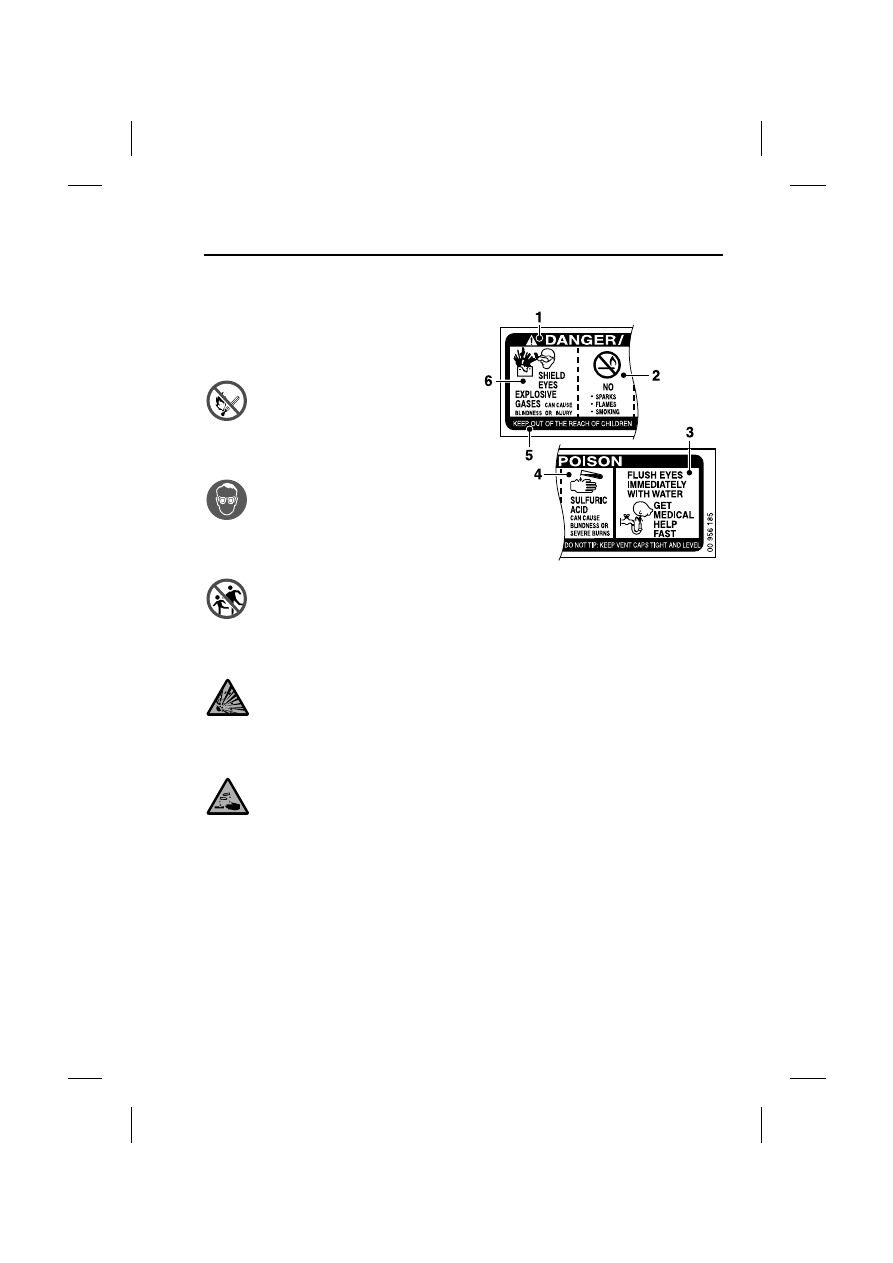Jaguar XK. Manual - part 53

215
Vehicle battery
R
Vehicle battery
BATTERY WARNING SYMBOLS
There is a label on the battery depicting a
number of warning signs. The warning
signs are as follows:
No smoking, no flames, no sparks (Red).
Shield eyes (Blue).
Keep away from children (Red).
Explosive gas (Yellow).
Battery acid (Yellow).
1. DANGER/POISON
2. NO
• SPARKS
• FLAMES
• SMOKING
3. FLUSH EYES IMMEDIATELY
GET MEDICAL HELP FAST
4. SULFURIC ACID can cause
blindness or severe burns
5. KEEP OUT OF THE REACH OF
CHILDREN
DO NOT TIP
KEEP VENT CAP TIGHT AND LEVEL
6. SHIELD EYES
EXPLOSIVE GASES CAN CAUSE
BLINDNESS OR INJURY
E93877